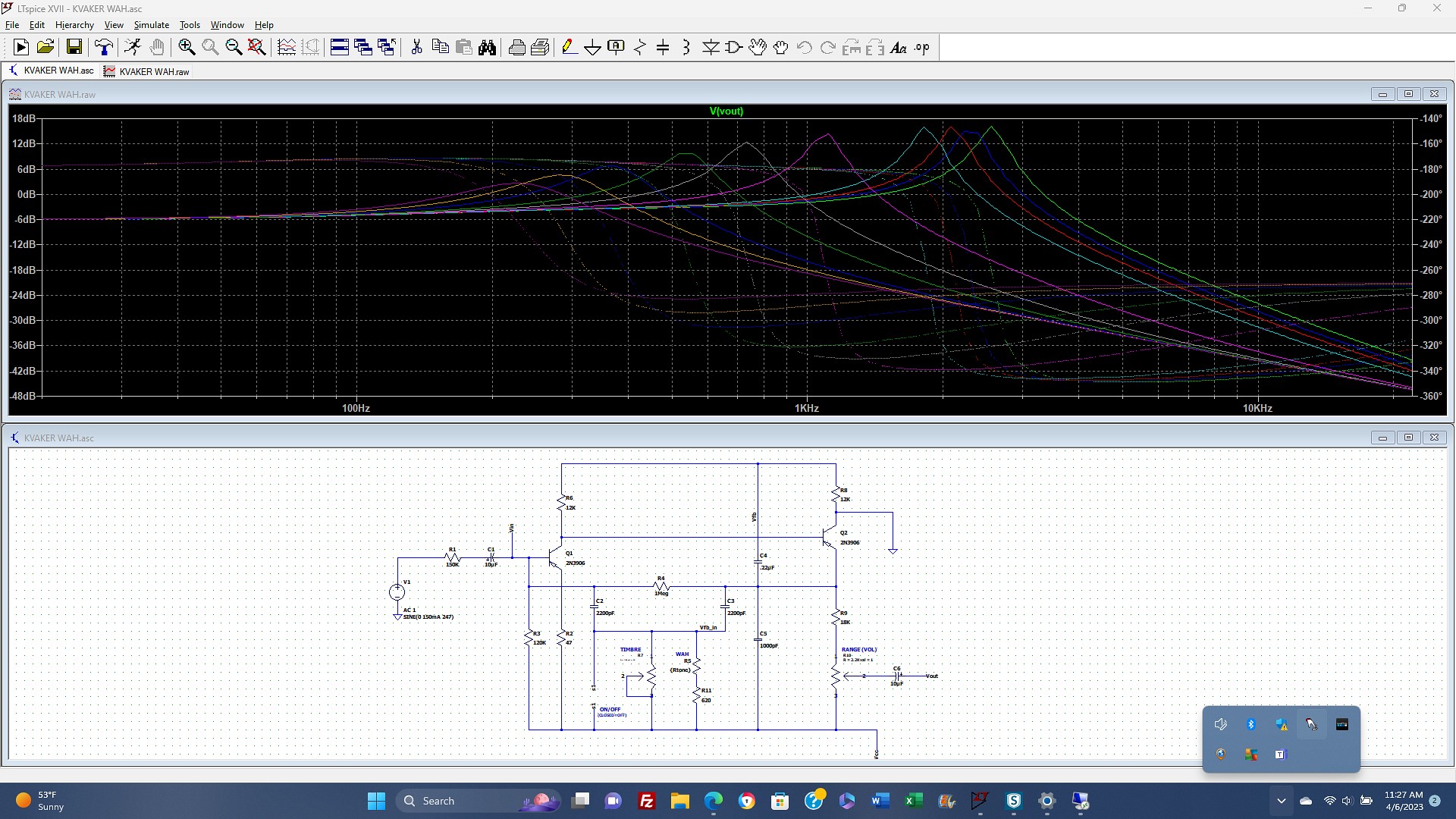From Russia with Wah - The Kvaker Wah Pedal
Last updated 04/29/23
By Paul Marossy
The Kvaker (Quaker) is another unusual and interesting wah pedal that I stumbled upon while on ebay. It was just so weird compared to any other wah pedal out there that
curiosity won and I had to buy it. The seller was in Ukraine, so I had to wait a while until it would arrive from half way around the world - at the time of writing this
the Ukraine was in the middle of a war with Russia. I thought maybe it would never get out the country but it did eventually make it to me after six weeks had passed. The two main
reasons I found it interesting is that the enclosure/treadle design is very unusual and the circuit it uses is uncommon - a germanimum PNP transistor quasi Twin-T circuit with a Range and Timbre control. The Timbre control shifts the range of the variable bandpass filter, and the Range control is basically
a volume control. The Timbre control shifts the range between a "yaw yaw", sort of "conventional" wah sound and a "you you" sound. It is also kind of cool as a
cold war relic.
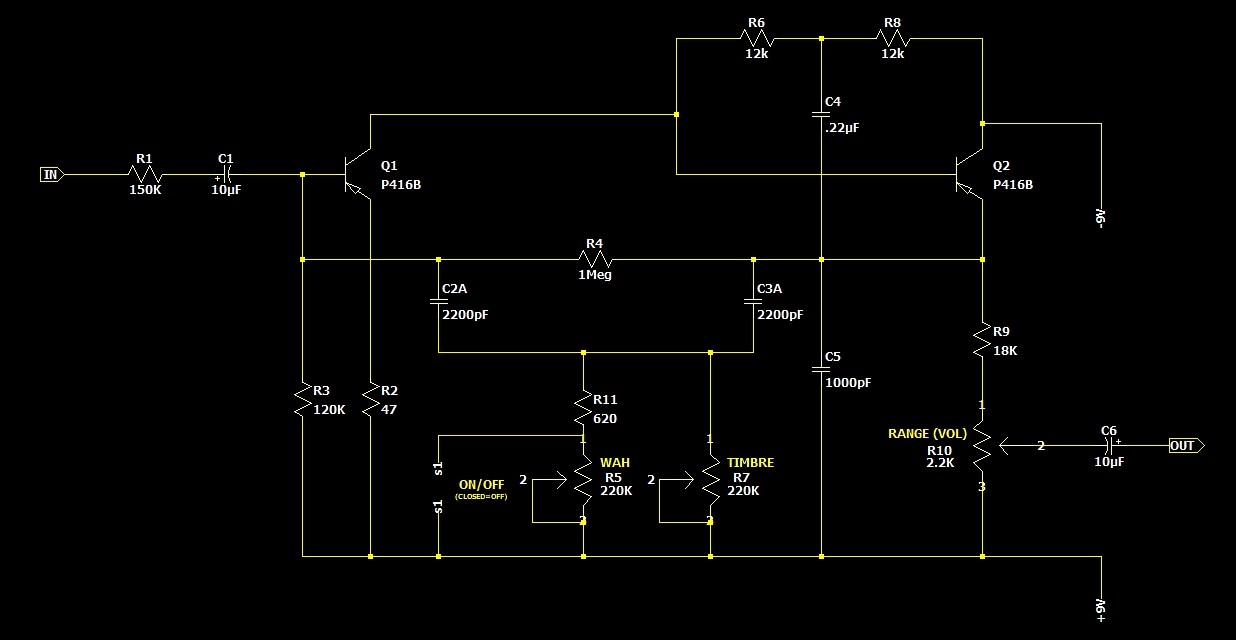
The shell/enclosure design just seems like it's from a different planet. Everything about it is just so different. For example, that spring loaded treadle that returns
to heel position, or how 20% of that treadle hangs over the end of the enclosure at the heel end.
In a way, this wah pedal reminds me of an old MIG fighter jet. This interesting cold war relic of the past weighs 2.2 pounds and is fairly substantial at 11"x4.3" - it's nearly
as large as the Maestro Boomerang but is more sleek. It has some quirks but overall it's a fun wah pedal, which after a short learning curve can be an extremely expressive
wah pedal. It excels at that fast warbly foot phaser type of thing. It was apparently made by a manufacturer/region named Kazan somewhere in Russia. Exact details are hard to find but I read somewhere that these were manufactured in an old military plant. Whether or not that is true, well your guess is as good as mine. They originally sold for 40 Rubles.
Below are some details of the Kvaker wah pedal.
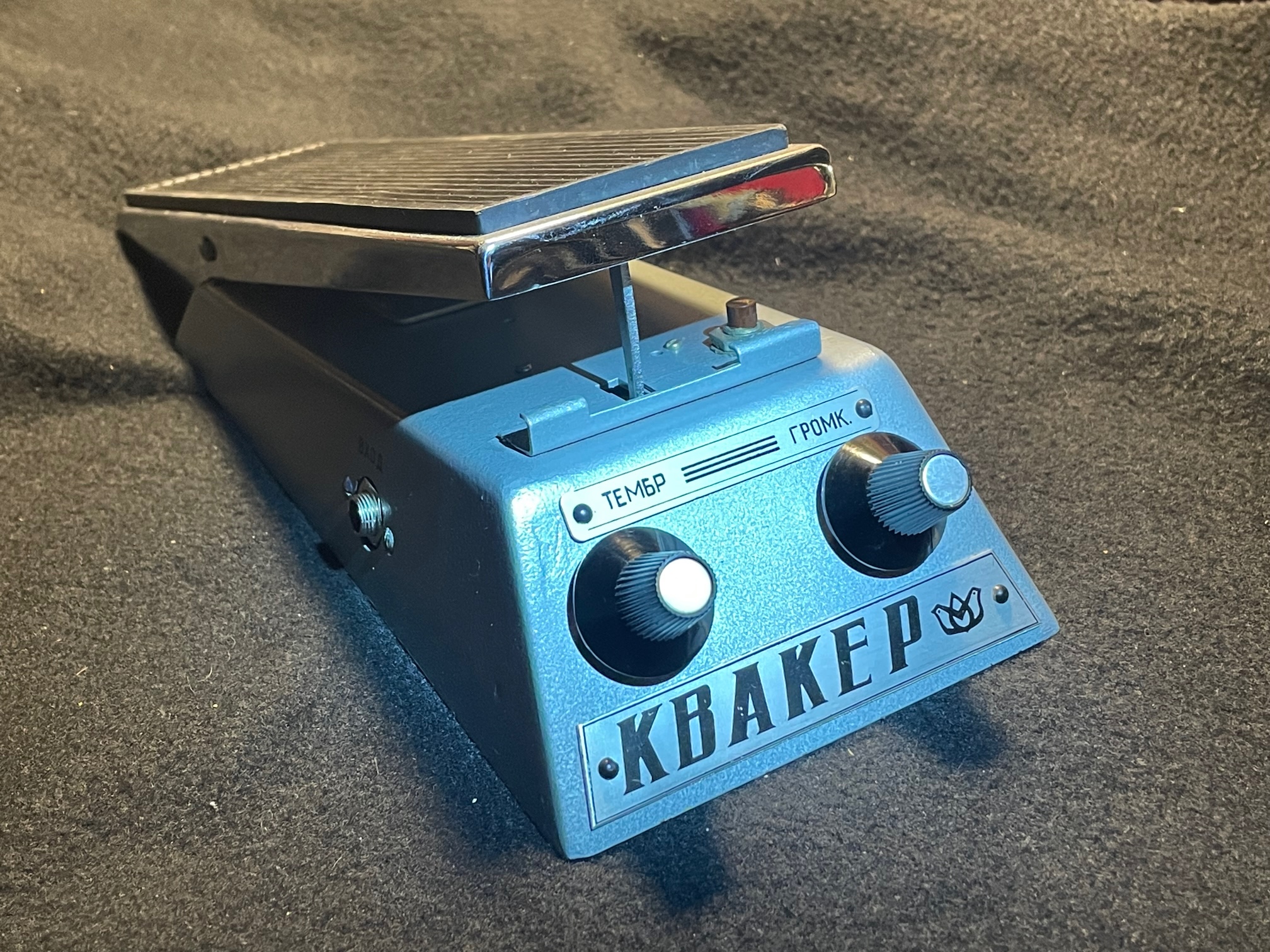 |
The thing that struck me the very first time I saw this old Russian wah pedal is how different it is from anything else I had ever seen. It has some interesting features, a Timbre and Range control. The Timbre control basically shifts the frequency range, and the Range control operates as a volume/boost control. |
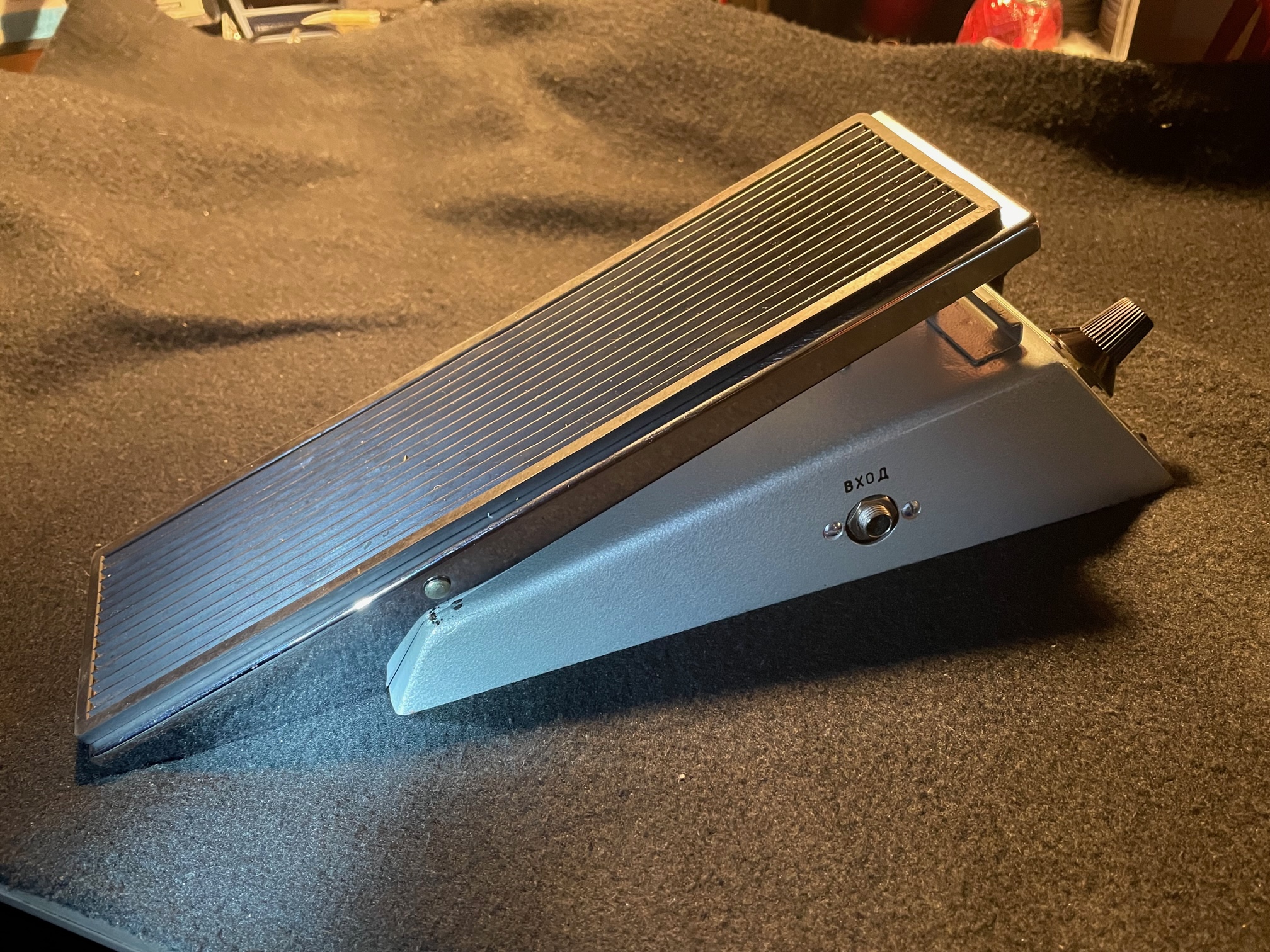 |
Another odd feature is the treadle, which is nearly 10 inches long. It adds to the kinda strange but sorta cool looks of this unit from 1976. |
 |
Here the bottom is removed to reveal the electronics. The date code on the pots indicate date of manufacture was 1976. The circuit boards utilize an interesting arrangement. There is one board that lays flat on the enclosure and a daughter board attached to it which is mounted perpendicular and contains the majority of the components. |
 |
The circuit uses PNP Germanium transistors (P416B) and is positive ground. I like the look of these transistors. The bypass switch is a similar type to the one used in the Kadent Wah. |
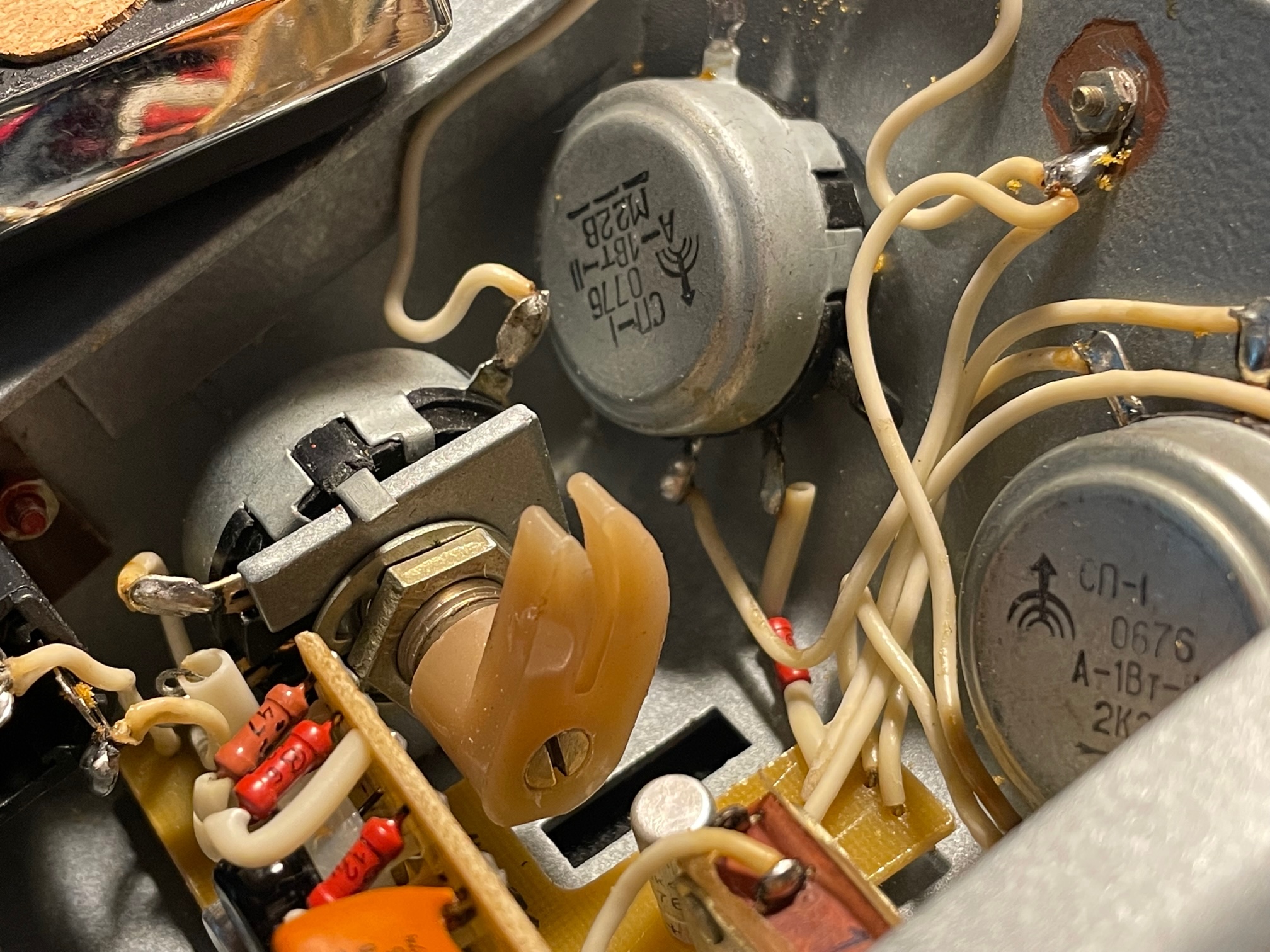 |
Another very interesting feature is the unique interface between the treadle and the pot. On the treadle is an arm with a hook on the end of it which goes into the claw shaped plastic actuator on the pot. Very simple and it doesn't put any stress on the plastic component. |
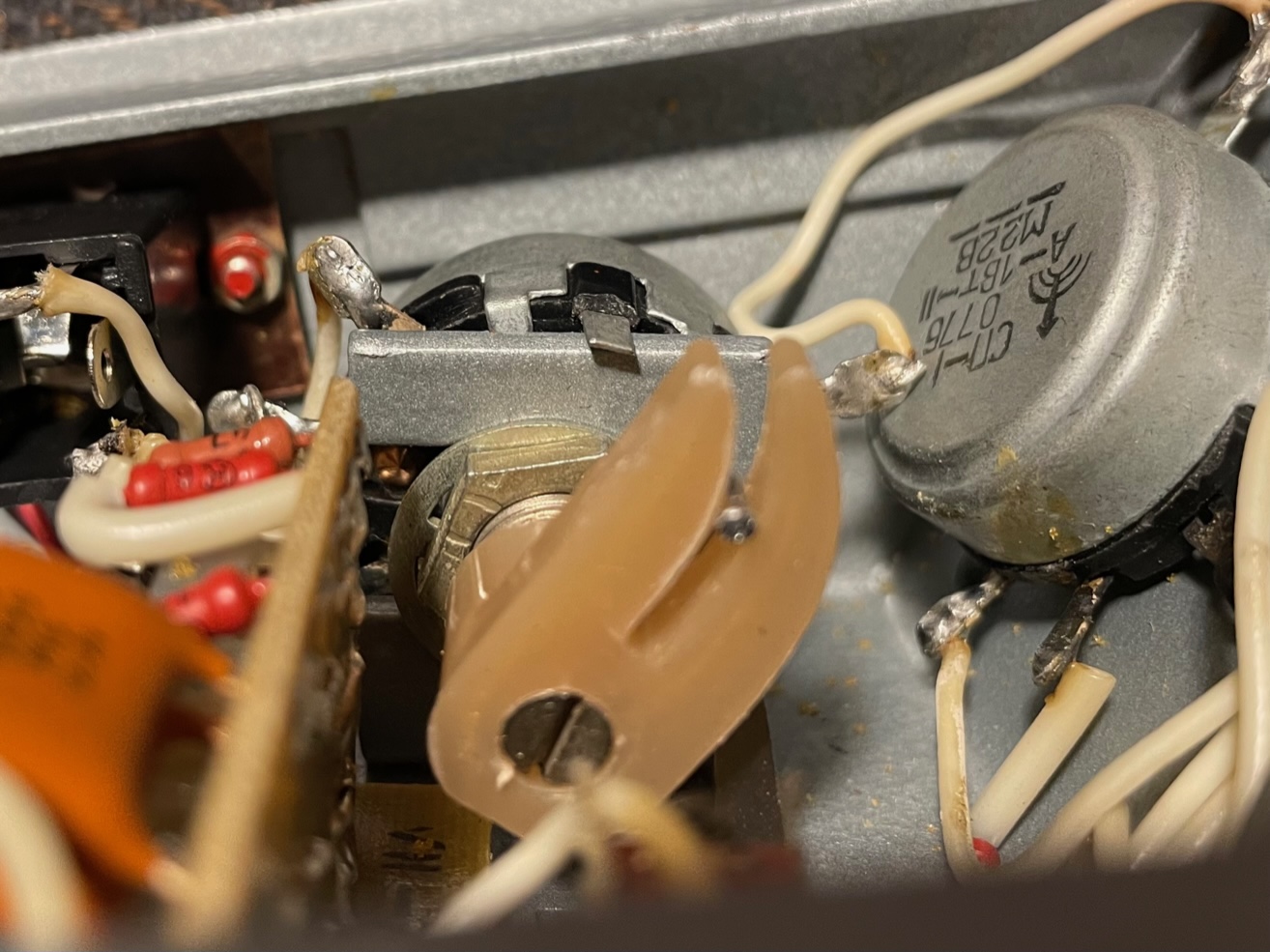 |
Here is a closer view of that claw shaped plastic component. Another simple and clever way to actuate a wah pot via a treadle. |
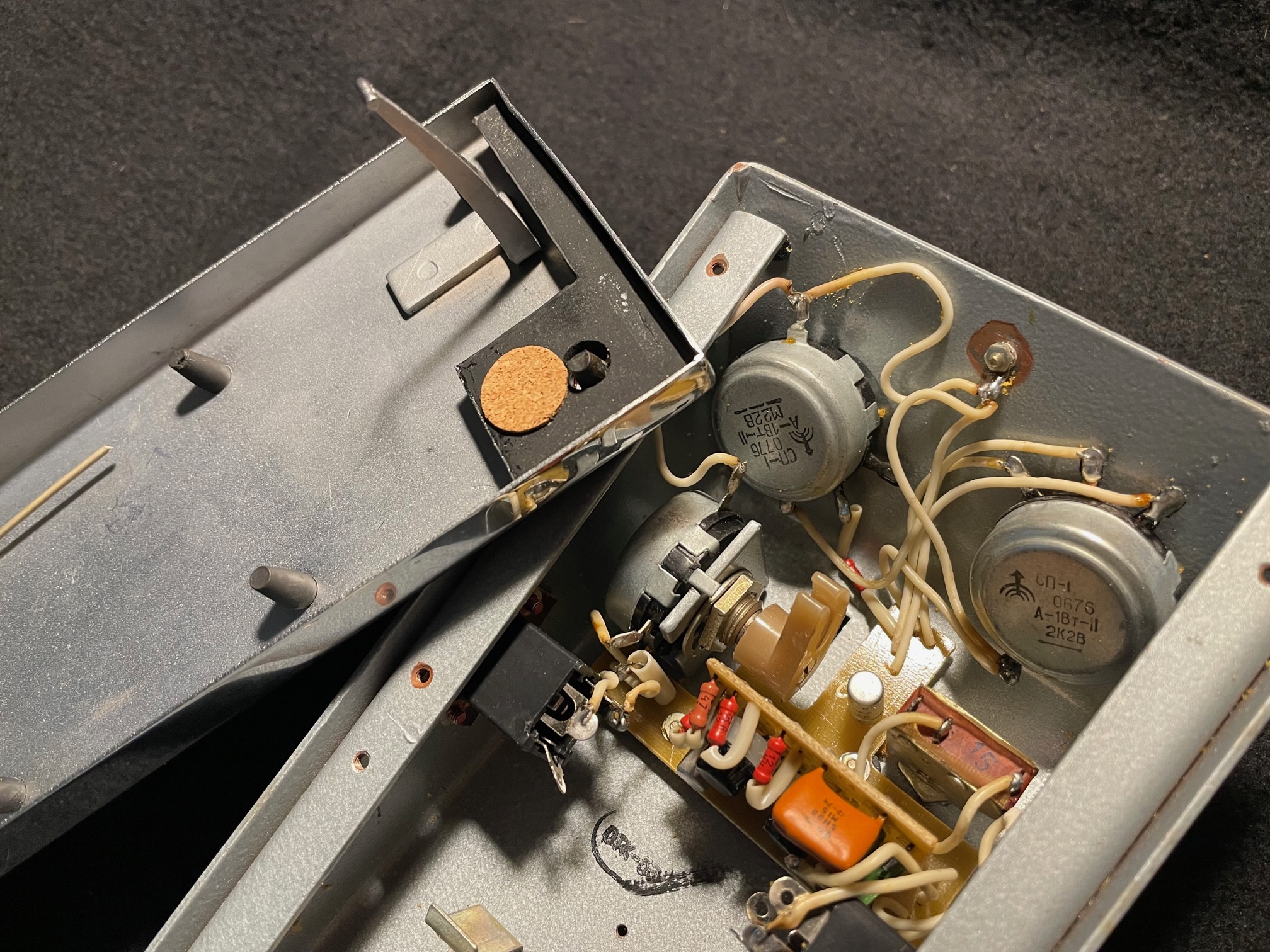 |
The arm that is attached to the treadle looks very spindly but it doesn't need to be heavy duty. It's much sturdier than it might appear. |
 |
This is a view of the spring that always returns the treadle to heel position. It is not a particularly stiff spring, so it's not difficult at all to use. |
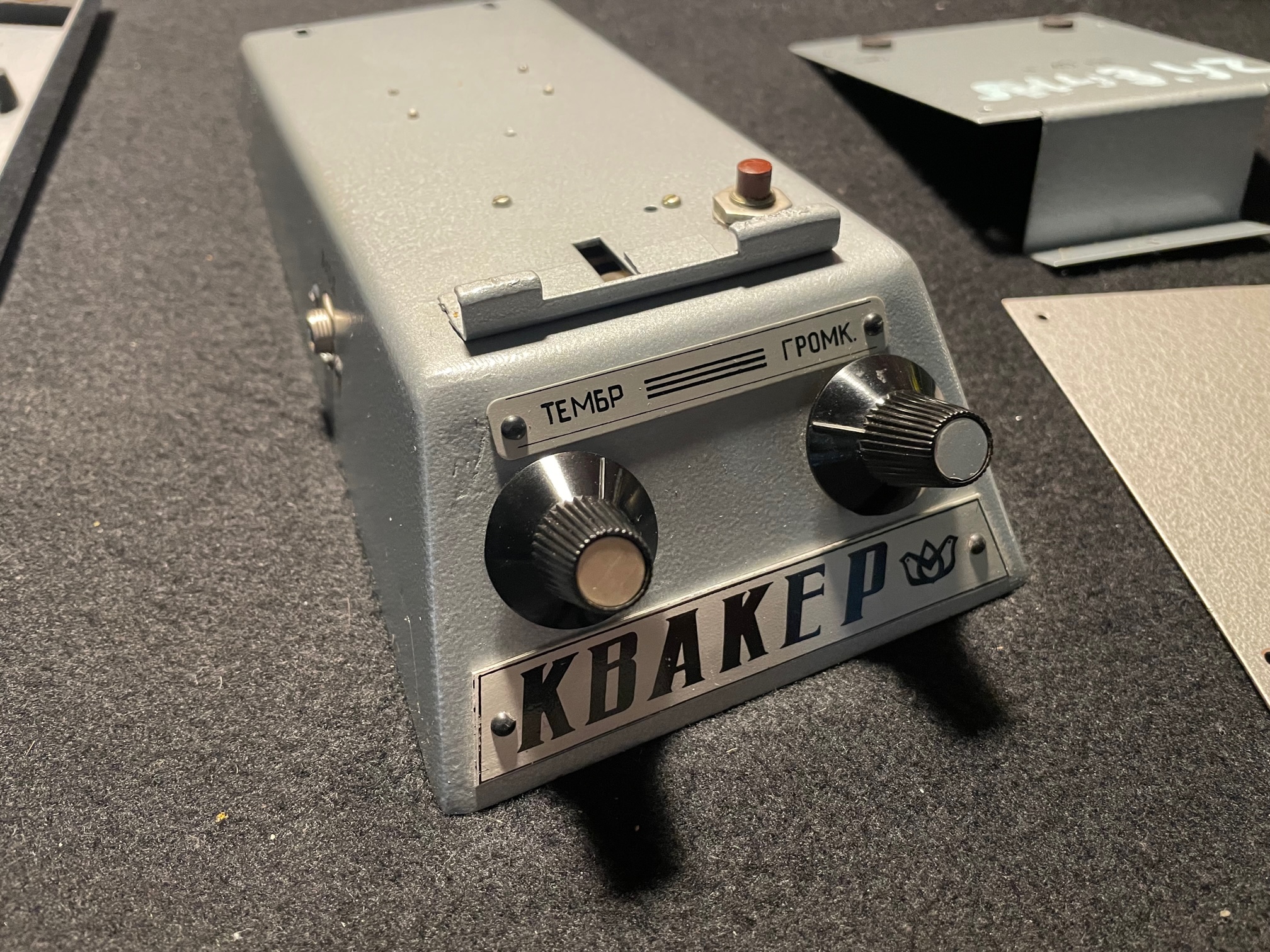 |
Here is the enclosure with the treadle removed. The name plates are riveted onto the enclosure. |
 |
Here the battery door is removed to reveal the spacious battery compartment. |
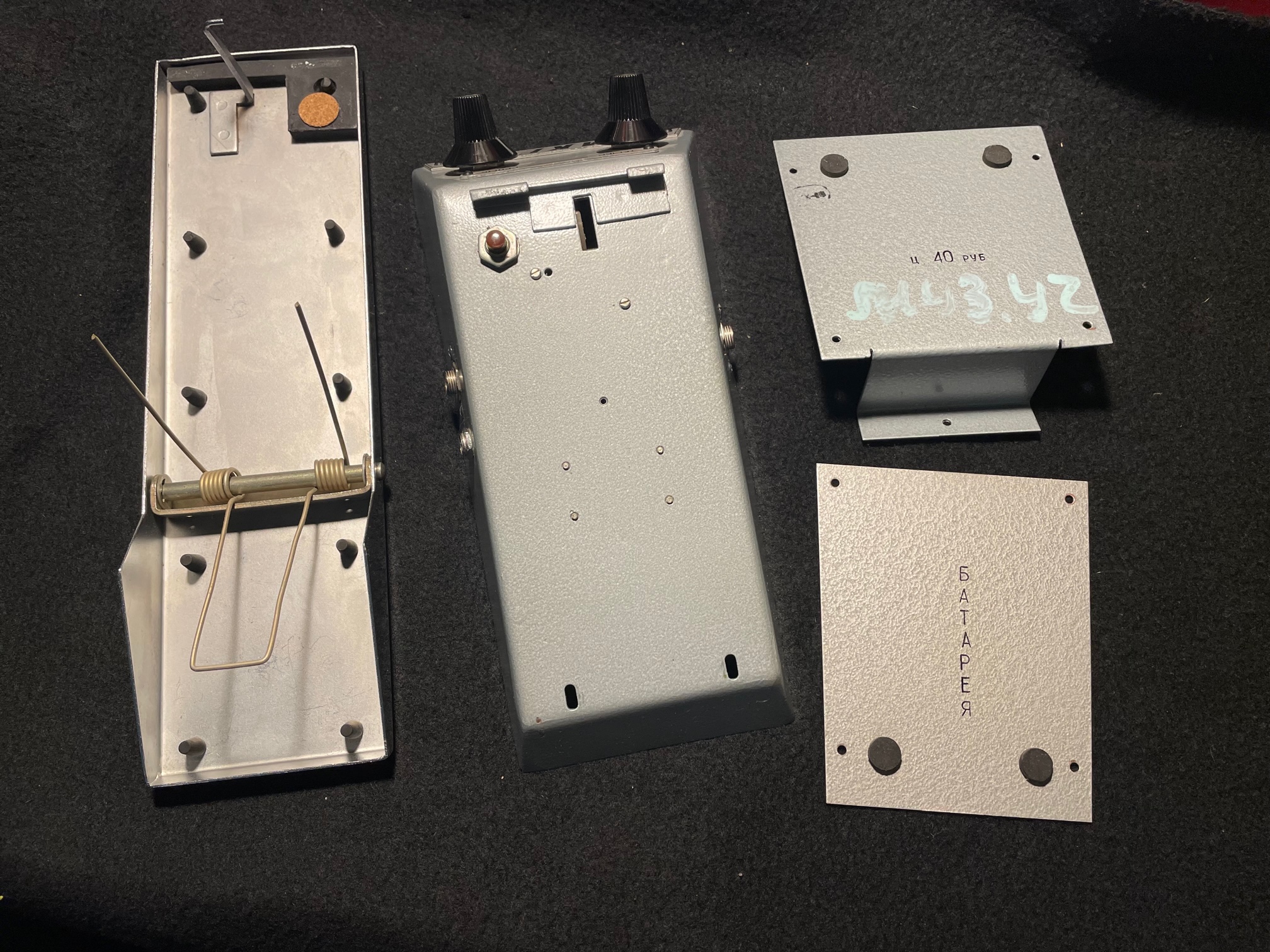 |
The enclosure is composed of four main components. The bottom half is relatively heavy duty stamped steel with a Hammerite type finish. The bottom plates are attached to the body via a couple of L-shaped brackets that are spot welded to the inside surface. |
 |
Here is the box that these came in when new. |
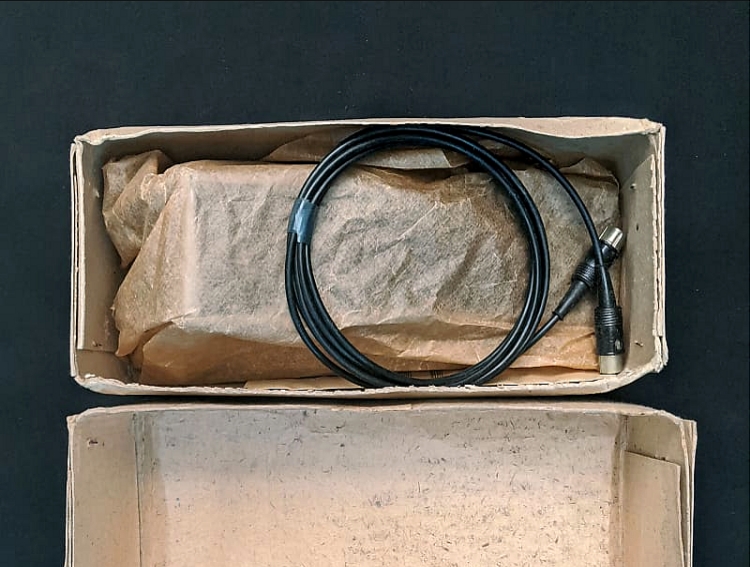 |
The unit I have has been modernized to use 1/4" input & output jacks. Originally it used an odd 5-pin connector which is sort of like a MIDI cable, as shown in this picture. This was apparently the standard used for musical instrument connections by the USSR at the time. |
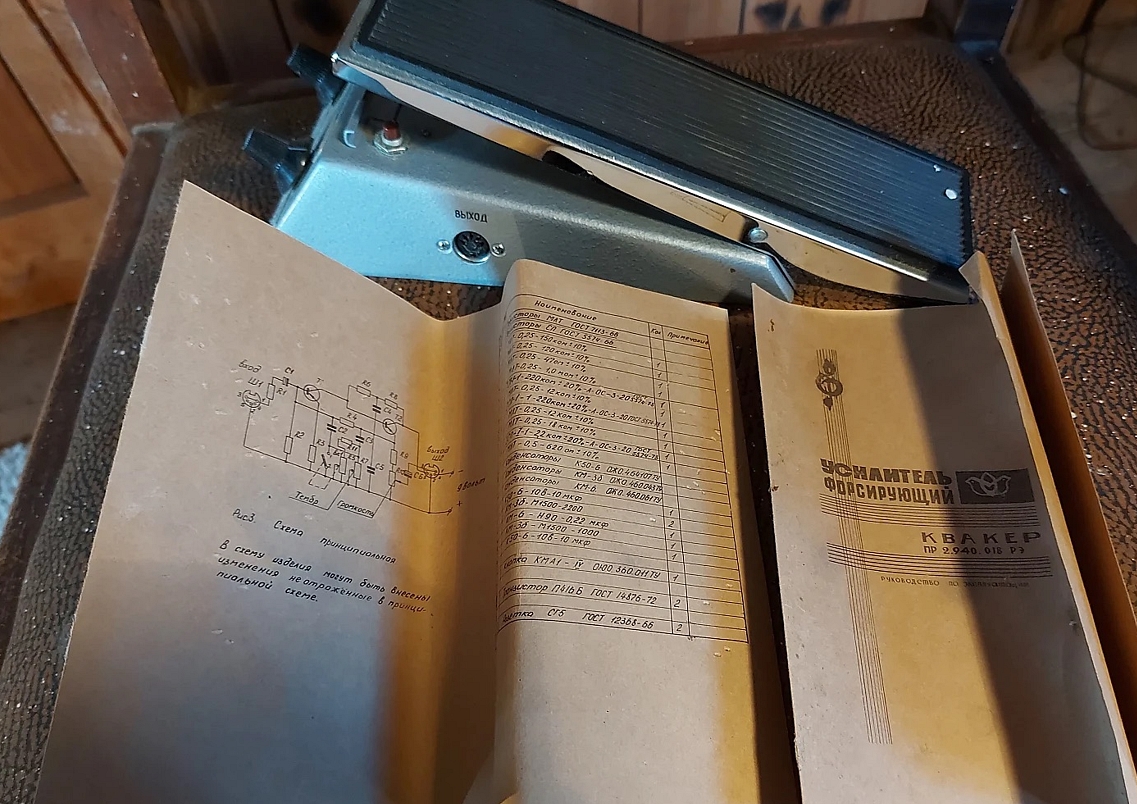 |
Fortunately my unit came with the original manual which has a schematic included. There is a link to a PDF of this manual at the bottom of this page. One interesting note in the manual is the maximum operating temperature, which is stated as 85 deg F. This corresponds to the temperature at which germanium transistors begin to become unstable. |
The specs listed in the original owner's manual states that the lower frequency range is 350Hz and the upper range is 2.8kHz, which corresponds to the simulation I did in LTSpice during the six weeks I was waiting for this thing to arrive from Ukraine.
